A blast from the past, RETRO-ROCKET skims across the glassy surface of Minnesota’s Lake Minnetonka. At 10' 2" LOA, a 5' beam, and 12" draft (standing still), this pocket-sized hydroplane was built by Rob Sotirin for his son, John, to run in the waters off the family’s Shady Island home.Named for the boat’s old-time style and its speed, RETRO-ROCKET is a throwback to the small outboard-powered hydroplanes that were popular during the 1940s, ’50s, and ’60s. After World War II, plans for do-it-yourself builders were available through boating and woodworking magazines, sparking an interest among returning veterans, and others, who were looking for on-the-water excitement at a reasonable price. Best of all, these boats were of a size that could easily be constructed in a home workshop.RETRO-ROCKET was built from Glen-L Marine Design’s plans for Super Spartan, a three-point hydroplane. Constructed in marine plywood, RETRO-ROCKET weighs less than 100 lbs and darts across the water, mostly on a cushion of air. A three-point hydroplane has two forward sponsons, plus the aft end of its hull, which is flat. When on plane, only the sponsons and the aft bottom surface touch the water.
Join The Conversation
We welcome your comments about this article. To include a photo with your remarks, click Choose File below the Comment box.


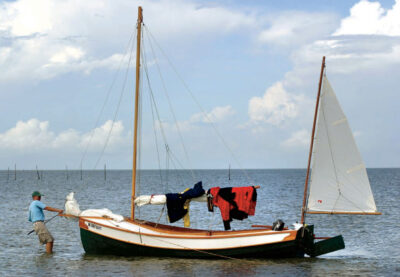
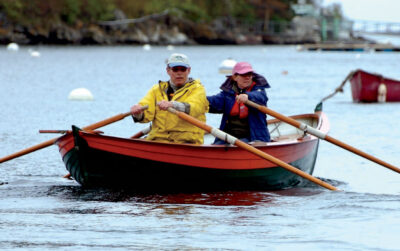
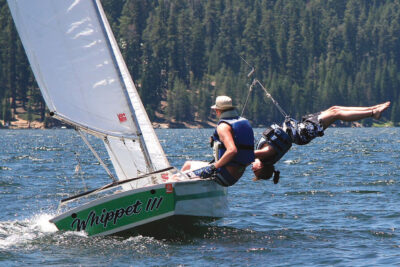
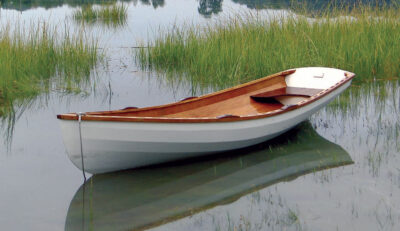

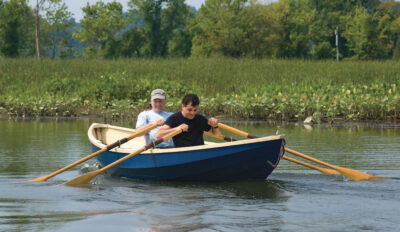

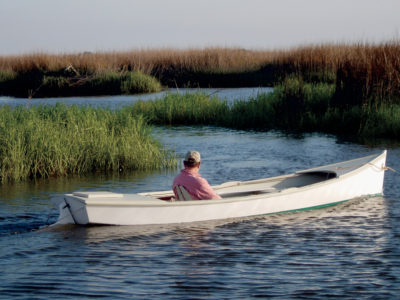
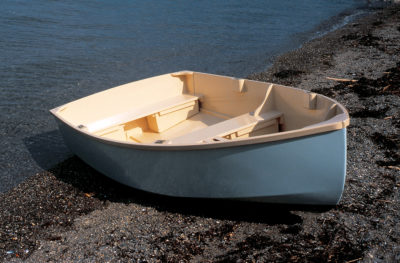
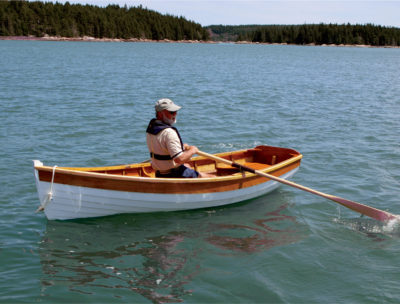
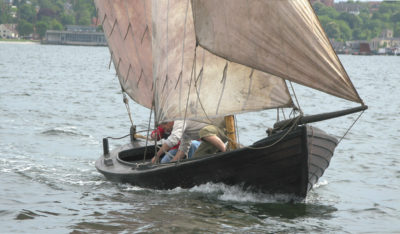
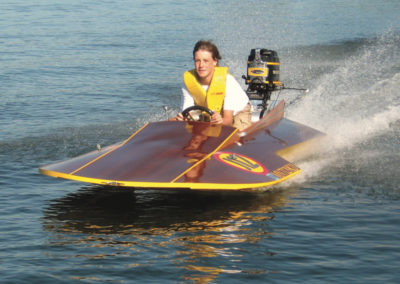
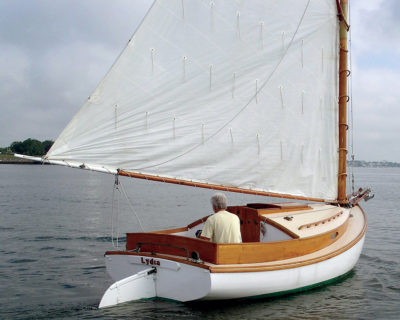
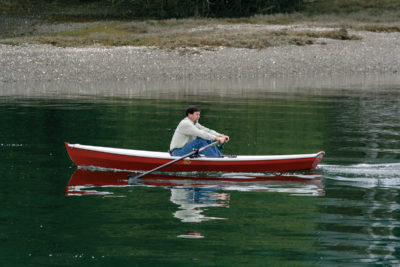
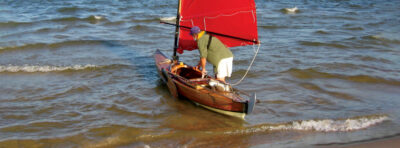
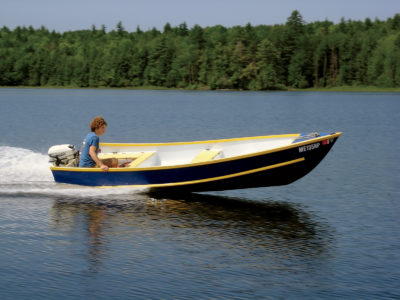
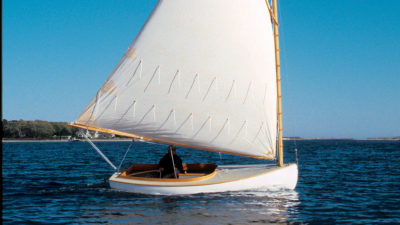


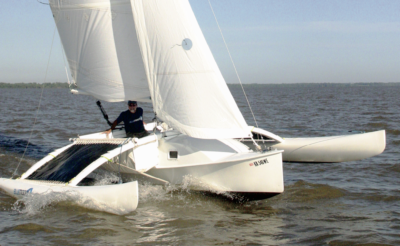
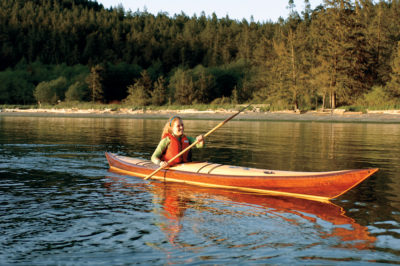
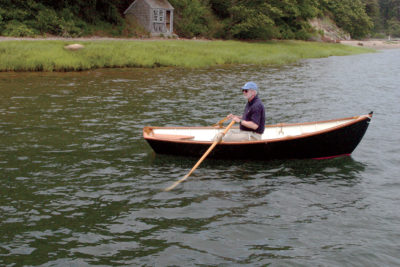
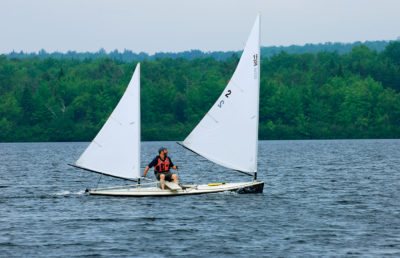
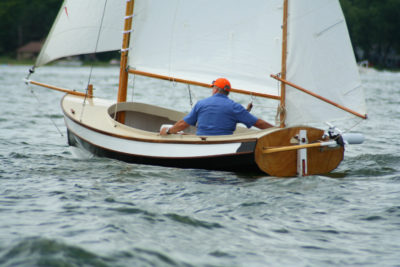
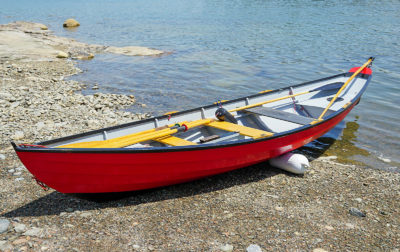
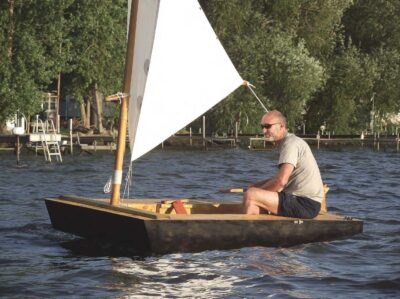
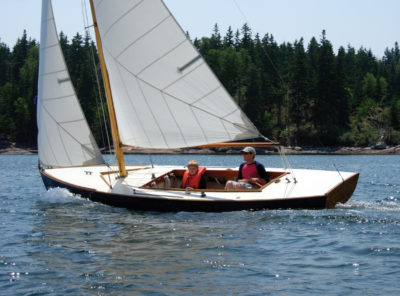
Great pick for the kids—and you. My first involvement in boat building was helping my dad build a hydroplane in 1960. It was from Popular Mechanics and was made from two sheets of 4’x8’ outdoor plywood with glue and screws. It was designed for 5 hp max, but my dad got a great buy on a 20 hp! We had to have a person crawl out front to get it on plane, then go like crazy, for sure. I have had seven boats since then, four of them wooden boats. Hopefully, your project will instill a lifetime happy experience in your children’s lives. Nice job!
Back in the mid ’70s, fiberglass products were fairly new and in my ninth-grade wood-shop class some of the kids were interested in boats. Two kids out of each class period of the day worked on making a plug or replica of a finished hydroplane boat that was about 9′ long. The plug was made up of wood and other materials and polished to a fine finish. A mold was taken off of both the top and bottom with reinforcements to keep things straight. Each half of the finished boat was made in its respective mold and polyurethane foam was added and the whole thing clamped together while the foam expanded inside for flotation. When cured, the clamps were removed and out popped a finished hull ready for hardware. Looked great, worked great, and a good project for kids to learn how to work as a team even when not in the same class period. Each that worked on it got a finished boat by working together after school. Time was not a factor once the molds were made. One of the kids went on to be a professional racer at the seven-liter class and another lad, while not on that particular project, but on a similar one was one of the crew members on the Miss Maddison at the unlimited level.
We sell our young kids too short these days. They are capable of doing far more than we give them credit for. All we need to do is have them develop an interest with a good attitude and they do the rest on their own. Unfortunately for our school district, none of those shop programs exist any longer. In 1975 I had moved on to the high-school program in the same district. We just stepped up the game a bit there. I have been blessed with finding a lifetime job working with great people over the years that I am still doing at the age of 82. I am just one of those hands-on kids that loved the shop classes in high school. Even at that, I was far from being one of the best students in class. We need to remember that nothing gets done without a need. Sorry to see so many of the hands-on classes go to the wayside. We just might have a need for them to come back some day. I wish I knew how to get some of the photos to you of some of the work that those kids have done over the years. Thanks for reading this far.
Maynard Oliver
Hi,
I also had one of these in the ’60s. We had a cabin on Glendo reservoir (Glendo, Wyoming) and my dad built two boats in our garage. A 20′ cabin cruiser, with one of the first Berkley Jet drives. That’s another story. Then he built me a small hydroplane from some plans in Popular Mechanics.
Man, was it fun! It had a 15 HP Mercury outboard and would really haul a**. One of my dad’s friends convinced him to modify the engine to burn hotter gas. :(. It wouldn’t start very easy after that, but when it did, man. It was fast! I wish I had a photo or two, but alas, they disappeared during some moves my parents made later.
I remember one of my jobs was applying soap to the thousands (it seemed like) of screws he drove into that big boat.
Congrats on your project, may you have many years of enjoyment !